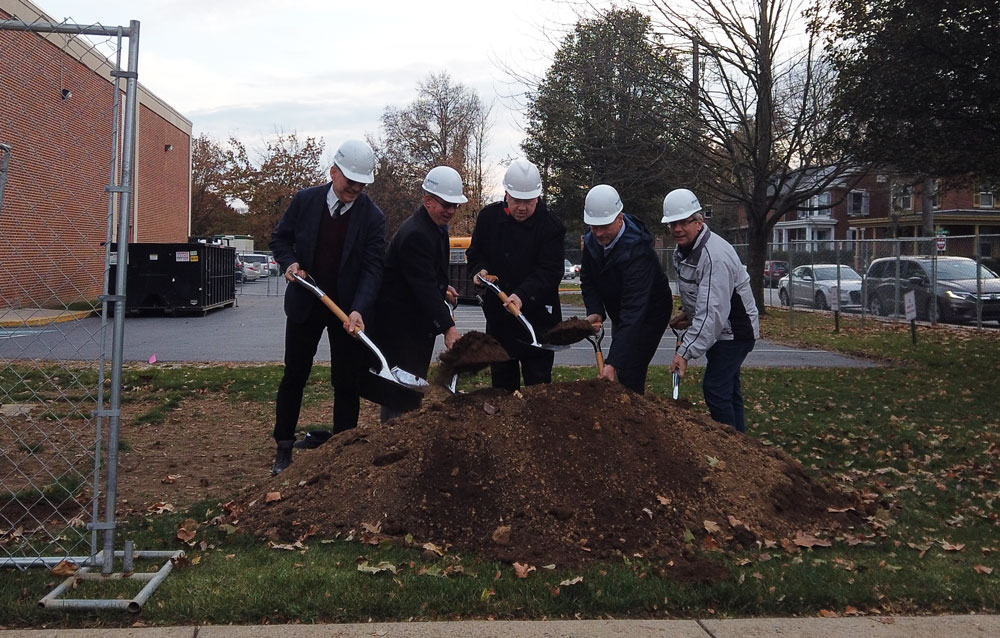A groundbreaking ceremony is a kickoff event that marks the beginning of construction for a new building project (which could be new construction or even a major renovation to an existing building). For most organizations, this is a long-awaited day worthy of celebrating – one that may have been preceded by years of planning, fundraising and meetings. Plus, it’s a great way to celebrate and thank the people and organizations that helped bring the project to fruition.
Five basic steps to planning a groundbreaking ceremony:
- Create a budget
- Schedule your ceremony
- Determine the details
- Invite guests
- Express gratitude
What does a groundbreaking ceremony look like?
A formal groundbreaking ceremony happens at the active construction site and typically consists of a few speakers (a representative of your company, a local official, etc), actual groundbreaking with shovels, photo opportunities, and networking.
Why should you have a groundbreaking ceremony?
The goal of a groundbreaking ceremony is to create excitement and support about your new building project. This is a great opportunity to share how this project will positively impact the community, your customers/clients, and your employees. A groundbreaking ceremony brings media attention to your company and naturally provides a platform to showcase how your company is growing, meeting your mission, and where you’re headed in the future. Plus, this is an opportunity to recognize and thank the people and organizations who played a part in getting the project started and those who will be making it a reality.
What you need to know when planning a groundbreaking ceremony:
1) Create a budget
Groundbreakings are flexible in style. They can be intimate and simple or elaborate and energetic. Regardless of your preference, one important guideline for planning is to create a budget Establishing your budget ahead of time will help in making decisions for food, ambiance, and video/photography coverage.
Who will be involved in organizing your groundbreaking ceremony?
- Representative of your company
- Construction Manager (CM)
- Chamber of Commerce
- Rental company (tent, chairs, etc)
- Audio/visual company
- Public relations adviser
- Caterer
2) Schedule your ceremony
If you are planning to have a groundbreaking ceremony, let your construction manager know as soon as possible so they are able to help choose a date to ensure the ceremony does not interfere with any work that may be in progress on the jobsite and choose an appropriate time within the construction schedule. Mid-morning or mid-afternoon is optimal timing, as this gives you and/or your vendors time to prepare the site for the ceremony and does not interfere with public news broadcasting.
Remember, your contractor can help with:
- Selecting best place on job site for ceremony
- Making dirt available for the actual groundbreaking
- Provide hard hats and shovels
- Renderings for display
- Speaking (if requested)
3) Determine the details
There are countless directions you could go in for your groundbreaking ceremony. These decisions depend on your vision and goals for your event and are could even be influenced by the type of building you are celebrating. Depending on your goals, ideas could be having an elaborate or simple spread of food (at a separate location), live entertainment, photo spots to encourage social media coverage, boards displaying architectural renderings, special event-specific give-away item or virtual reality station to “get inside” the building. It is also common practice to simply have the groundbreaking ceremony without any extra entertainment or activity.
Event detail decisions may include:
- Will you have appetizers, drinks, etc?
- Who will coordinate/provide audio equipment?
- Who will be your speaker/s?
- Do you need a podium/platform?
- How will you manage parking?
Most ceremonies however incorporate at least 2-3 speakers, sometimes more, who discuss the project, a bit about how the company got to this point and where the company is going in the future. For example, a speaker from the organization itself, the developer, construction firm, and a local official. Typically, this portion of the ceremony is less than 30 minutes, so it is important to keep speakers on schedule. The actual ground breaking will follow the speaker portion of the ceremony as well as photo opportunities, which should be pre-planned to maintain a schedule.
Developing a minute by minute schedule ensures your ceremony stays on track and is respectful of your attendees’ time. This schedule should be provided to all people involved with the ceremony including photographers, speakers, and emcee. Make sure all speakers know exactly how much time they have to speak at least a week before the ceremony so they can prepare their notes accordingly. Organize each person’s notes in a binder or an iPad that is kept on the podium throughout the ceremony, so everyone is prepared when it is their turn.
Ideas for group photos:
- Your company executives
- All attendees from your company
- Your company executives and the Chamber of Commerce
- Your company executives and the Construction company representative
- Your company president and local officials
- Your company president and board members
- Your company president, Construction company representative, and architect
- Your company president and the developer (if applicable)
4) Invite guests
Now you’re ready to start spreading the word about your groundbreaking. To keep your guest list organized, begin by making categories of the categories of guests you’re going to invite like people from your company, vendors, media, organizations, local officials, etc. It may be helpful to have a small group of people collaborating on your attendee list to ensure no one is missed.
Categories of guests may include:
- Company
- Contractors/architects/engineers
- Media
- Local officials
- Lenders
- Vendors
- Major donors
- Membership organizations
- Chambers
- General public
Action steps once you have your guest list include sending a media alert to news and journals and distributing an invitation. Invitations should be sent at least two weeks before the event, so it is important to begin making your invitation list as soon as possible. Media alerts should be sent at least four weeks ahead of the event to ensure they are able to provide coverage at your event. Public officials should receive their invitations at least 3-4 weeks ahead of time for coordination of schedules. If you are making your event open to the public as well, be sure to share your event details on various social media platforms to spread the word about your ceremony.
RSVPs can be managed via email, you could set up an online form or even use an event site like EventBrite to manage your attendee list.
5) Express gratitude
During the ceremony, it is important to thank your guests for attending the celebration as well as any local officials and notable attendees. After the ceremony is complete, be sure to send formal thank you notes to prominent guests. Refer to your guest list to help determine who you need to thank. For extra coverage, share photos and video of your event on social media with a public announcement of gratitude for everyone who has helped make your project possible.
 Login
Login


